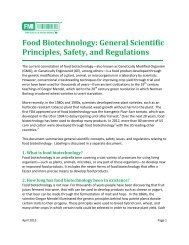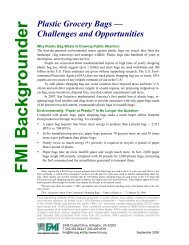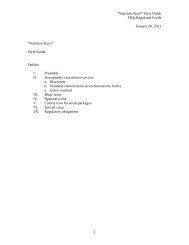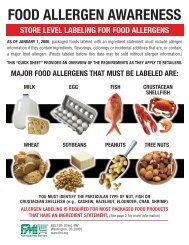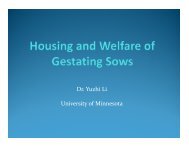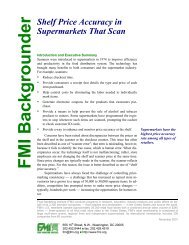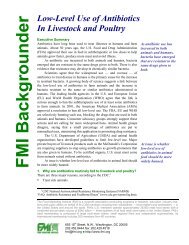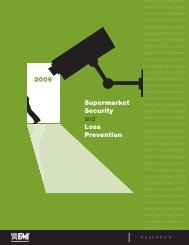Consumer Shopping Habits for Wellness and Environmentally ...
Consumer Shopping Habits for Wellness and Environmentally ...
Consumer Shopping Habits for Wellness and Environmentally ...
You also want an ePaper? Increase the reach of your titles
YUMPU automatically turns print PDFs into web optimized ePapers that Google loves.
Allergies <strong>and</strong> Sensitivities<br />
Many consumers (approximately 15% of all households) report concern over various allergies <strong>and</strong><br />
sensitivities. Per the quantitative data in the figure below, dairy <strong>for</strong>ms the top concern, with many<br />
consumers convinced of lactose intolerance at some level. Nuts, often a source of worry to moms<br />
with school-aged kids, represent the second highest level of concern. Qualitatively, however, we do<br />
find that, except in the case of actual medical diagnosis of an allergy, consumers do tend to overrepresent<br />
both their level of concern <strong>and</strong> their level of vigilance in making product choices relative to<br />
allergies <strong>and</strong> sensitivities.<br />
Figure 13 – Concerns About Food Allergies/Sensitivities<br />
Dairy<br />
34%<br />
Nuts<br />
29%<br />
Cow's milk<br />
Seafood<br />
24%<br />
25%<br />
Wheat<br />
17%<br />
Gluten<br />
14%<br />
Eggs<br />
Soy<br />
10%<br />
10%<br />
Q12: “You mentioned that you or someone in your household has food allergies or sensitivities. Among the following ingredients,<br />
which are you concerned about?” | Base: Shoppers with a household member with food allergy/sensitivity (n=313). | Source: GMDC<br />
2009 Survey, Mar. 2009.<br />
Key Transitions in H+W<br />
Separation to Holism<br />
Once in the World of Health <strong>and</strong> <strong>Wellness</strong>, consumers may progress from the Periphery to the Core,<br />
evolving toward holism. A holistic approach is one in which H+W <strong>and</strong> all of its various parts become<br />
more unified, rather than ―just a bunch of disassociated concepts <strong>and</strong> products.‖ For example, a<br />
Periphery consumer may take cold medicine when s/he is sick <strong>and</strong> consider healthier eating options<br />
while st<strong>and</strong>ing in the grocery store looking at produce. However, that consumer will rarely think about<br />
H+W outside of such occasions. Showing a much deeper level of integration, Mid-level <strong>and</strong> Core<br />
consumers relate many other aspects of their lives to H+W, like getting enough exercise <strong>and</strong> sleep,<br />
setting aside ―time out‖ to de-stress, <strong>and</strong> taking herbal supplements to rein<strong>for</strong>ce their bodies‘ natural<br />
defenses. At the Core, H+W becomes about a great deal more than just about the individual <strong>and</strong> the<br />
immediate family - environmental <strong>and</strong> political concerns often become a part of the lifestyle, as the<br />
social <strong>and</strong> environmental impacts of one‘s lifestyle are taken more seriously. The below figure<br />
reflects this transition from ―separation‖ to ―holism‖ that is indicative of the evolution in mindset <strong>and</strong><br />
activities <strong>for</strong> Periphery to Mid-level to Core consumers.<br />
26




